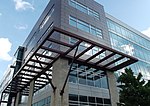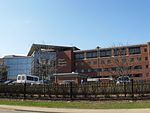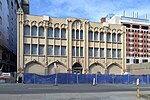Pittsburgh Technology Center
Pittsburgh Technology Center (PTC) is an office park located in the South Oakland neighborhood of Pittsburgh, Pennsylvania. PTC, on the 48 acre site of a former Jones and Laughlin Steel Mill, is a hub of advanced academic and corporate technology research. More than 1,000 people work on site which has become an attractive location for knowledge workers in Pittsburgh's new economy. The center was budgeted at $56.8 million ($113 million today) during the summer of 1991. The total development cost, including public and private investment, exceeded $104 million. The Pittsburgh Life Sciences Greenhouse operates wet lab space in its Bridgeside Point I business incubator that has been responsible for assisting over 24 companies. The $46.5 million 150,000 Bridgeside Point II began construction in 2007.PTC is considered to be one of the best examples of brownfield redevelopment in the United States.
Excerpt from the Wikipedia article Pittsburgh Technology Center (License: CC BY-SA 3.0, Authors).Pittsburgh Technology Center
Technology Drive, Pittsburgh
Geographical coordinates (GPS) Address Nearby Places Show on map
Geographical coordinates (GPS)
| Latitude | Longitude |
|---|---|
| N 40.4326 ° | E -79.963 ° |
Address
Technology Drive
Technology Drive
15261 Pittsburgh
Pennsylvania, United States
Open on Google Maps









